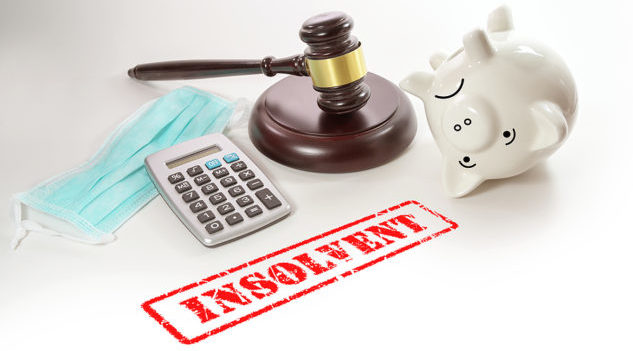The unprecedented COVID-19 pandemic has not only sent shockwaves around the world but caused the start of a seemingly unstoppable tsunami of insolvency for Australian small businesses.
A combination of factors – culminating with the end of JobKeeper early next year – will see a tidal wave of small businesses close shop. JobKeeper, introduced by the Federal Government in March when Australians were forced into lockdown to flatten the curve, actually incentivised directors to continue zombie companies for their staff, rather than face the reality that a lack of cashflow simply meant their businesses were insolvent. And now the Federal Government is slowly moving to end JobKeeper by reducing payments from $1500 to $1200 a fortnight for full-time workers, with another cut planned in January before the program finally ends in March next year – and then the tsunami will hit.
JobKeeper has acted as a cashflow substitute to cover wages, but it is important for small business owners to realise that JobKeeper does not cover employee-related expenses such as superannuation and workers compensation insurance. If business owners lack the cashflow to cover those expenses, they ought to consider planning to place their company into external administration (i.e. liquidation or voluntary administration) because while JobKeeper does not end until March 2021, the temporary amnesty given to directors from insolvent trading claims ends on December 31 2020. Directors are able to rely upon that amnesty (which covers debts incurred in the ordinary course of business between 25 March and 31 December) only if they put their company into external administration prior to 31 December 2020.
So, which small businesses are most at risk from this incoming wave? The two at the top of my list are personal health and beauty services and hospitality – many of which are run by so-called mum and dad businesses. There are relatively low barriers to entry to these industries, so it’s a case of not only existing businesses being disrupted by forced closures and reduced consumer demand, but new competition being able to quickly and easily pivot to cater for the return of demand.
Insolvency occurs when a business runs out of cash, so industries which are likely to find it hard to obtain new or extended lines or credit or bank overdrafts are also at risk. These include small businesses with limited or no stock or plant and equipment to use as collateral, such as (again) those in personal health and beauty services, brokers or agents and contractors such as plumbers, electricians and people working in information technology.
What can Aussie small businesses do to prevent being swept along in this seemingly unstoppable wave? I recommend starting to use cashflow statements for actual historic cash movement and for projected cashflow movements. If small business owners need help to do this, their tax accountant should be able to assist.
I think many small businesses need to question whether they can realistically see a light at the end of the tunnel, or whether they are better off winding down their company, taking a break and re-focusing when the economic and public health landscape is a lot clearer. Some businesses will want to take the risk and see if revenue improves in the lead-up to Christmas, but for many, those bells will not be jingling. For their own personal financial stake, they need to ensure any risk is well-calculated and they have a fall-back option planned by acting now to get a quote for external administration. This may not lead to a happy Christmas, but it will certainly make for a brighter new year.
Brendan Nixon, Partner, SM Solvency Accountants











